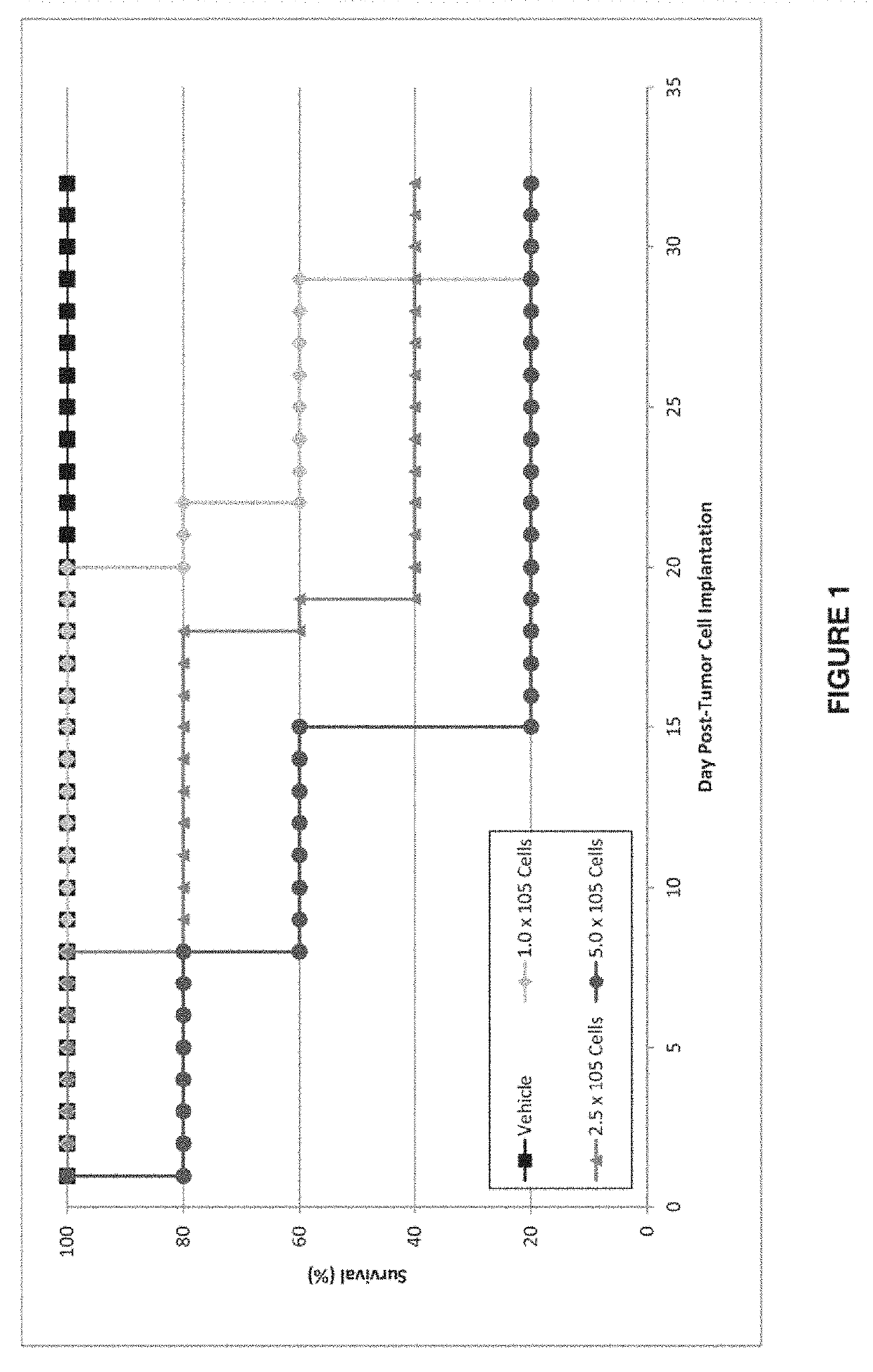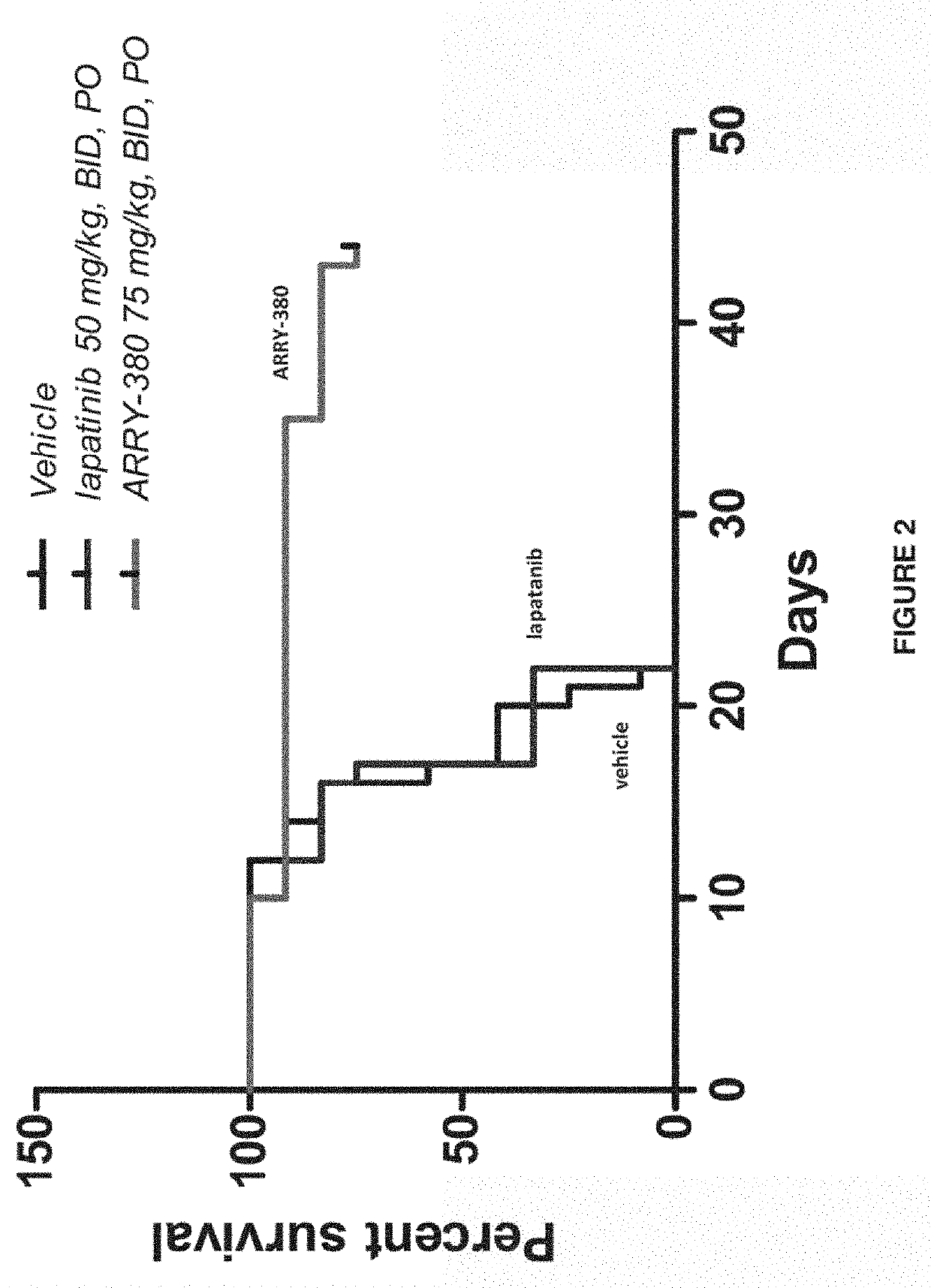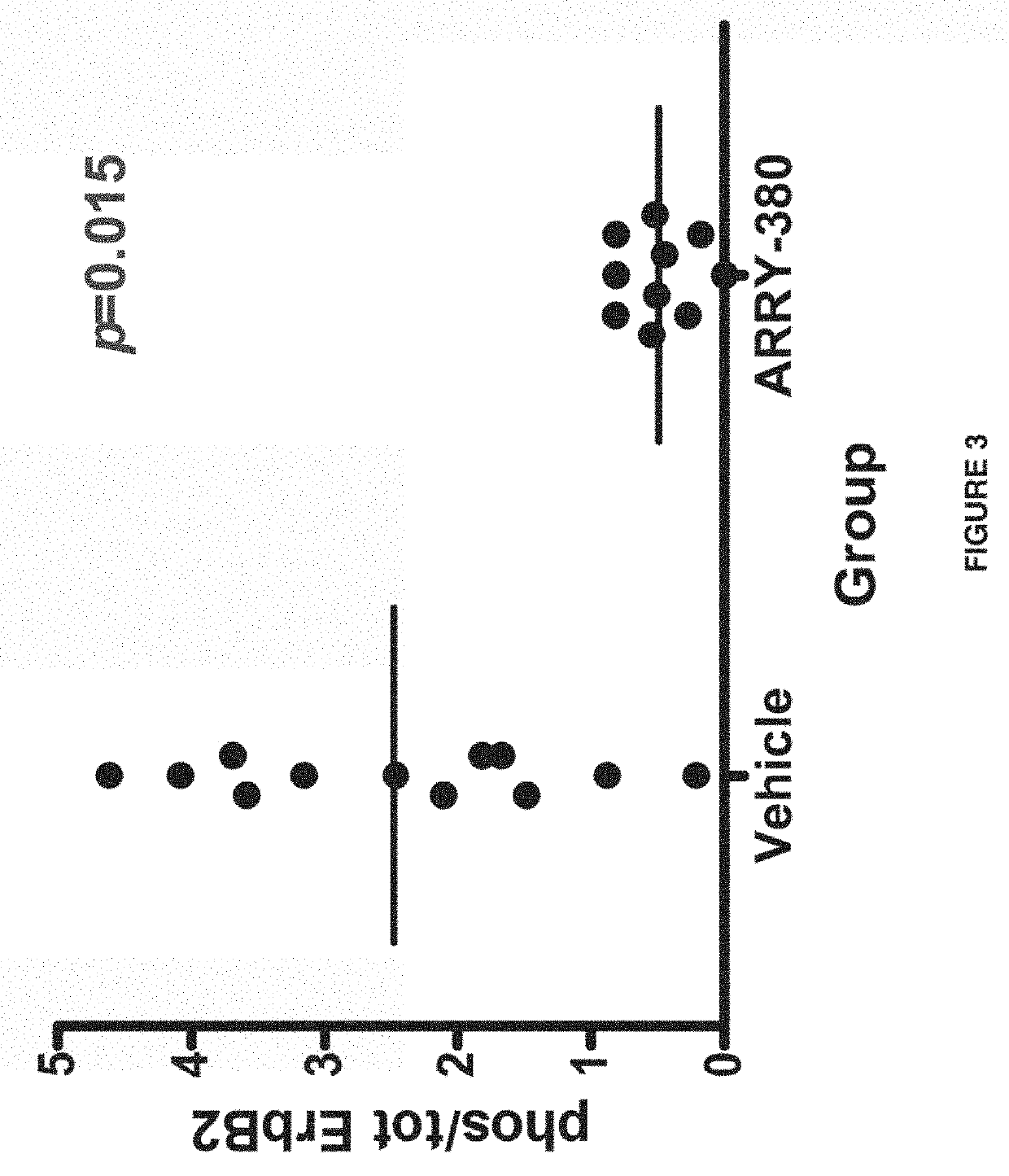Treatment of brain cancer
a brain cancer and tumor technology, applied in the field of brain cancer treatment, can solve the problems of brain metastases and death in erbb2, and achieve the effect of improving the survival rate and reducing the risk of erbb2
- Summary
- Abstract
- Description
- Claims
- Application Information
AI Technical Summary
Problems solved by technology
Method used
Image
Examples
example 1
Growth of NCI-N87 Gastric Carcinoma in Nude Mice Implanted Intracranially
[0231]Tumor cells (NCI-N87 gastric carcinoma cells, NCI, Bethesda, Md.) were implanted in nude BALB / c female mice (Charles River Laboratories International, Inc.) via intracranial injection directly into the brain. The mice were separated into four groups (N=5) and were injected with vehicle (saline), 1×105 tumor cells, 2.5×105 tumor cells, or 5×105 tumor cells. The results are shown in FIG. 1. Brain tumor cell burden was associated with decreased survival in the NCI-N87 model.
[0232]In a pilot study using 14C albumin as the tracer and mannitol as the positive control for blood brain barrier (BBB) disruption, it was confirmed that the intracranial inoculation procedure did not mechanically disrupt the blood brain barrier.
example 2
Inhibition of NCI-N87 Gastric Carcinoma Xenograft Growth in Mice Implanted Intracranially
[0233]Anesthetized nude BALB / c female mice (Taconic Laboritories Inc., Germantown, N.Y.) were inoculated with human tumor cells (NCI-N87 gastric carcinoma cells, NCI, Bethesda, Md.) intracranially at lamba suture. 5×105 cells in saline were implanted via intracranial injection. The mice were separated into three groups (N=12); vehicle (acidified 30% Captisol®, pH about 4.5), 50 mg / kg lapatanib PO BID (30% Captisol®), and 75 mg / kg N4-(4-([1,2,4]triazolo[1,5 -a]pyridin-7-yloxy)-3-methylphenyl)-N6-(4,4-dimethyl-4,5-dihydrooxazol-2-yl)quinazoline-4,6-diamine PO BID (acidified 30% Captisol®, pH about 4.5). Dosing began two days after implantation. The dose may have been reduced as necessary if drug-related weight loss (approximately 5%) was observed. The mice were monitored twice daily for general health and behavioral / neurological effects, and body weights (BW) were determined twice weekly. At first...
example 3
Brain Pharmacokinetic (PK) Study in Mice
[0234]Nude female BALB / c mice were administered a single PO dose (dose volume 10 mL / kg) of lapatanib (50 mg / kg, 30% Captisol®) and N4-(4-([1,2,4]triazolo[1,5-a]pyridin-7-yloxy)-3-methylphenyl)-N6-(4,4-dimethyl-4,5-dihydrooxazol-2-yl)quinazoline-4,6-diamine (75 mg / kg, 30% Captisol, weigh out compound and add 30% Captisol® to give 7.5 mg / mL solution, then add 5 N HCl in 200 μL increments until it forms a clear, yellow solution). The mice were separated into groups and their PK was studied at 4 time points (0.5, 1, 2 and 4 hours, 4 mice per group per timepoint). The animals were euthanized by CO2 inhalation at the time points. Whole blood was drawn (300 μL) by cardiac puncture and plced in an eppendorf tube containing ethylenediaminetetraacetic acid (“EDTA”) (37.5 1.5%). The samples were centrifuged, and the plasma was decanted and frozen at −20 ° C. until delivered to analytical chemistry. The brains were collected. The animals were perfused wit...
PUM
| Property | Measurement | Unit |
|---|---|---|
| solubility | aaaaa | aaaaa |
| boiling point | aaaaa | aaaaa |
| weight % | aaaaa | aaaaa |
Abstract
Description
Claims
Application Information
 Login to View More
Login to View More - R&D
- Intellectual Property
- Life Sciences
- Materials
- Tech Scout
- Unparalleled Data Quality
- Higher Quality Content
- 60% Fewer Hallucinations
Browse by: Latest US Patents, China's latest patents, Technical Efficacy Thesaurus, Application Domain, Technology Topic, Popular Technical Reports.
© 2025 PatSnap. All rights reserved.Legal|Privacy policy|Modern Slavery Act Transparency Statement|Sitemap|About US| Contact US: help@patsnap.com



